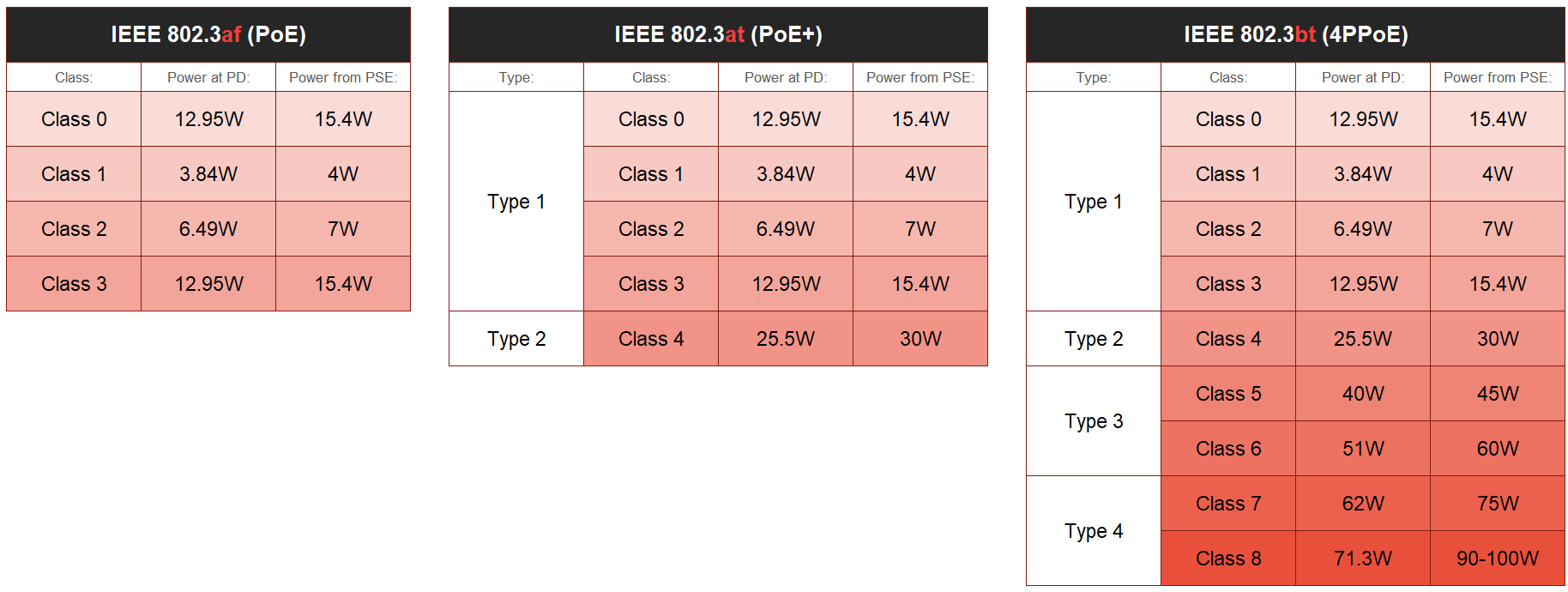PoE - Why is my device dead?
Passive PoE vs. Active PoE
Just because there is a specification, does not mean a vendor has to implement it. Sometimes vendors will implement non-standard PoE into their products and it is up to the user to make sure the requirements are met.
With passive PoE, which does not meet the IEEE standards, a PSE will supply power to the PD at all times, which can have unintended consequences and even damage equipment. Passive PoE can also use non-standard voltage ranges, like 5 or 24 VDC.
One benefit of an active, or IEEE 802.3af compliant PSE, is that the PSE is “smart” enough to check if there is a PD before supplying power, and even negotiate the power to supply to the PD.
An active PSE is smart enough to only supply power if the PD can communicate correctly back to it.
Passive PSE can potentially damage equipment that is not compatible.
Oooh, that looks like it hurt. This was actually the case with a client. We supplied a P2P radio that was 24 VDC passive PoE, and a 48 VDC passive PoE injector was connected to it. How did this happen?
Some excuses included:
The manufacturer supplies both passive 24 VDC and 48 VDC PoE devices, along with active.
The label on the PoE injector is conveniently hidden behind the mounting plate.
The box for the injector doesn’t state compatibility.
They sure don’t make it easy on you.
If an active PSE was used instead, it would have checked if the device is a PD, and just not powered the device.
Okay, passive prone for mistakes, active better. So what does active PoE look like in more detail?
PoE Power Class
We briefly mentioned the IEEE 802.3af, 802.3at, and 802.3bt standards in our previous PoE - Why won’t it work? post. One of the main differentiating factors is the power that is available over PoE (8 different classes). With IEEE compliant devices, power is negotiated between the PSE and PD. Let’s take a look at the three phases that are involved in the negotiation process of active PoE.
The Discovery Phase
From the PSE perspective, we want to make sure the device connected is a PoE PD. In this phase, a voltage between 2.7 and 10.1 V is applied, and checks that the resistance is 25kΩ. If this is true, a PD has been detected and we can move to the next phase: Classification.
The Classification Phase
Now is a good time to reference a table with the different PoE power classes.
We can see that there are different classes and each class has different power requirements.
At this point, the PSE will check what class the PD is by supplying a low voltage and measuring the current. Based on the current drawn by the PD, the PSE will know what class the PD is. If the PSE cannot supply the requested power, then it simply will not power the device. If the PSE can supply the requested power, then it moves on to the operational phase.
The Operational Phase
Congratulations! You now have power!
Power Demotion
One last item to cover is that the PSE can actually limit the power supplied to the PD even if it is asking for more.
The way power demotion works is the PSE will demote the PD to a lower type.
For example, if the PD is requesting Class 8 and the PSE has Class 6 available, the PD will be demoted to type 3, and receive the highest class in that type, which is Class 6.
What if the PD is requesting Class 8 and the PSE has Class 5 (let’s say 45W) available? Class 5 is type 3, so the PD will be demoted to type 3 again, right? Actually, since we saw before that if the PD is type 3, it would be given Class 6, but we can see that is unavailable. The PSE will actually demote the PD to Type 2, where the class assigned will be Class 4, which the PSE can provide. In other words, in demotion scenarios the PD will be always demoted to the type for which the PSE can supply power for the highest Class within that type. Cool? Cool.
Wrap Up
So we talked about how passive and active PoE work, power classes, and the finer details of how active PoE has checks to protect your PD.
It is exciting times for PoE as 802.3bt was only released in 2018, so it’s difficult to find these high powered devices in the wild yet. But with 90W of power, PoE is opening doors to many interesting applications like powering displays, computers, and much more.





